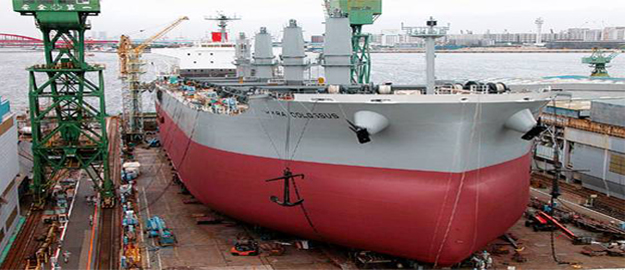- EN 10067 Grade A Bulb Flat steel
- What is a bulb plate for shipbuilding?
- Bulb Flats for Shipbuilding and Construction Industry
- Flat bulb steel dimensions
- Flat bulb steel supplier
- NK DH36 bulb flat shipbuilding steel, NK D36 bulb flat shipbuilding steel
- RINA EH32 bulb flat shipbuilding steel, RINA E32 bulb flat shipbuilding steel
- RINA EH36 bulb flat shipbuilding steel, RINA E36 bulb flat shipbuilding steel
- RINA E bulb flat shipbuilding steel
- RINA DH32 bulb flat shipbuilding steel, RINA D32 bulb flat shipbuilding steel
- RINA DH36 bulb flat shipbuilding steel, RINA D36 bulb flat shipbuilding steel
- RINA D bulb flat shipbuilding steel
- RINA B bulb falt shipbuilding steel
- RINA bulb flat shipbuilding steel
- What is the difference between channel and angle steel?
- What is the standard size of a steel angle?
- A36 hot roll steel angle
- RINA Grade ABDE Marine Steel Plate
- ABS Grade A Shipbuilding Steel Angle Bar
- What is angle steel used for?
- What type of steel is used in angle bars?
- What are bulb flats used for?
- S235JR Shipbuilding Angle steel Dimensions
- A572 hot rolled angle steel with equal or unequal legs
- SS490 galvanized structural carbon angle steel under JIS3101 standard
- hot-dipped galvanized St 37-2 angle steel with unequal legs
- ASTM designation A36 angle steel applications
- ASTM A36 Hot-dip galvanized steel angle bar for corrosive environments
 Henan BEBON international co.,ltd located in zhengzhou ,henan province of china. Since it was established in 2008, Henan BEBON has earned an outstanding reputation for its professional exporting shipbuilding steel.About the products,we mainly specialized in steel products for shipbuilding which have been approved by some authoritative classification societies,likeLR,BV,ABS,DNV,GL and so on . Besides, we have three big warehouses--Zhengzhou,Tianjin and shanghai.
Henan BEBON international co.,ltd located in zhengzhou ,henan province of china. Since it was established in 2008, Henan BEBON has earned an outstanding reputation for its professional exporting shipbuilding steel.About the products,we mainly specialized in steel products for shipbuilding which have been approved by some authoritative classification societies,likeLR,BV,ABS,DNV,GL and so on . Besides, we have three big warehouses--Zhengzhou,Tianjin and shanghai.
Difference Between Channel and Angle Steel:
Channel Steel:
Shape: Channels are C-shaped steel sections with two flanges and a web connecting them.
Cross-Sectional Shape: Resembles a squared-off U shape.
Application: Commonly used in construction for structural support, framing, and other applications where load-bearing capabilities are needed.
Orientation: Can be oriented vertically or horizontally based on the application requirements.
Strength: Offers high bending strength due to its shape and design.
Varieties: Available in different sizes and thicknesses to suit various structural needs.
Angle Steel (Angle Iron):
Shape: Angles are L-shaped steel sections formed by bending a single piece of steel at a 90-degree angle.
Cross-Sectional Shape: Resembles an L shape.
Applications: Widely used for bracing, framing, support structures, and architectural applications where right-angle bracing is necessary.
Versatility: Can be used in various configurations and orientations based on specific requirements.
Features: Provides excellent strength in compression and tension along the legs of the angle.
Common Types: Equal leg angles have both legs of equal length, while unequal leg angles have one leg longer than the other.
Key Differences:
Shape: Channels have a C-shape, while angles have an L-shape.
Cross-Section: Channels have flanges and a web connecting them, while angles have two legs meeting at a 90-degree angle.
Applications: Channels are often used for structural support or as beams, while angles are commonly used for bracing and framing.
Strength Orientation: Channels provide strength in bending along the axis of the web, while angles are strong in compression and tension along their legs.
Variety: Both channels and angles come in various sizes, thicknesses, and materials to suit different construction needs.
In summary, while both channel and angle steel are important structural components, they differ in shape, cross-sectional profile, strength orientation, and typical applications. The choice between channel and angle steel depends on the specific structural requirements of the project at hand.


